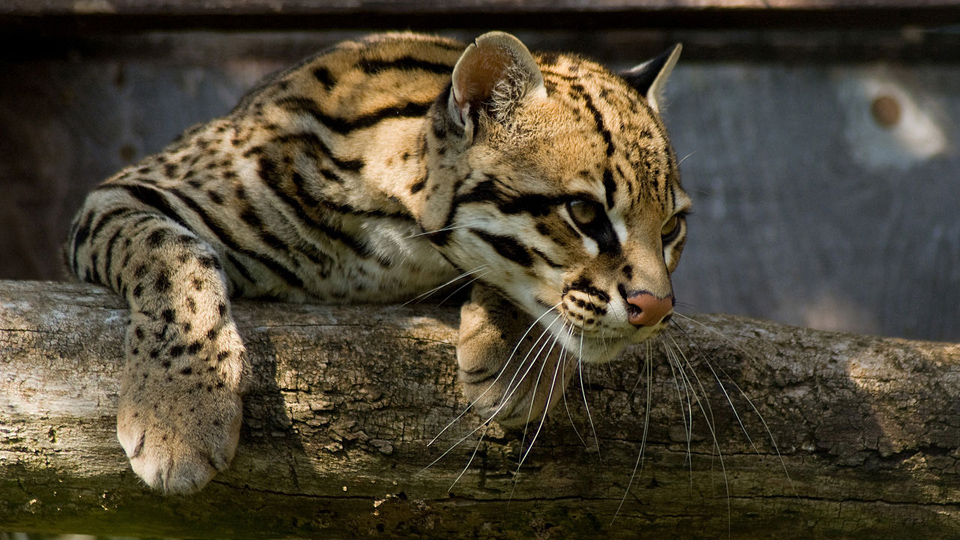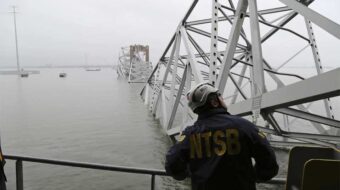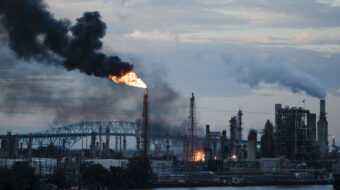
President Trump’s dream of a border wall is a nightmare for the U.S. Most agree it’s a dangerous idea rooted in xenophobia, but should it be built, endangered wildlife might be among its first casualties. It would also pose a significant threat to the climate. In a nation already being ravaged by global warming, it would be a multi-billion-dollar exercise in absurdity.
That, at least, is the general consensus of scientists and activists, the former of whom work at the University of Texas, Austin, and published a report on the wall’s environmental impact back in April 2018. The researchers, Tim Keitt and Norma Fowler, noted that plants and animals living in the areas near the Rio Grande would be negatively affected; large swaths of habitat along the border would be decimated by the construction process. The black bear living near Big Bend National Park would be isolated until driven extinct if their abode in Mexico’s Sierra Madre range were cut off from the U.S. by the wall. The ocelot, a wildcat in the jaguar family that has a small population in southern Texas, could also be snuffed out.
Also caught in the wall’s destructive path is the National Butterfly Center, a 100-acre wildlife refuge near McAllen, Texas. “They are going to bulldoze all the trees here and on contiguous properties during spring nesting season,” said the center’s executive director Marianna Trevino-Wright. “This will kill tens of thousands of birds. We are going to lose a significant amount of habitat and that’s what’s critical to species. Animals need to roam. They need food. They need mating opportunities, and all that will be cut off by the border wall. All terrestrial life, like the Texas horned lizard and the Texas tortoise, which are threatened and protected species, will drown in the event of a flood – and the Rio Grande floods often because this is a delta.”
Dan Millis, a program manager with the Sierra Club’s Borderlands project, remarked, “In terms of climate adaptation, building a border wall is an act of self-sabotage. The reason I say this is that we’re already seeing wildlife migrations blocked with the current walls and fences that have already been built. We have hundreds of these walls that were built without environmental protections.” It’s not just about the animals, either – experts agree that the mass production of cement required to erect such a wall is a huge source of greenhouse gas emissions.
“Like many of Trump’s ideas, this one has nothing to do with reality,” said Kierán Suckling, executive director of the Center for Biological Diversity. “There is no reason to sacrifice the health of border communities and wildlife for such political grandstanding.”
“If Trump was concerned about our nation’s true national security issues, he would be tackling climate change head-on while safeguarding refugees and immigrants from the worst impacts of a warming planet and ongoing turbulence in their homelands,” said Gene Karpinski, president of the League of Conservation Voters.
As with climate change itself, the Trump administration is acutely aware of the ecological threat the wall presents, and chooses to do nothing. In a document sent to U.S. Customs and Border Protection, officials with the Interior Department stripped a collection of warnings by on-staff biologists and wildlife managers about the wall’s potential impact on the area’s cats and other animals from the letter. This only came to light when environmental group Defenders of Wildlife uncovered it with a Freedom of Information Act request. Staffers had concluded that “technology, additional Border Patrol agents, and other mechanisms” would be better, “instead of [the] installation of levee or bollard walls.”
“This administration has already demonstrated that it will cast aside the law, reject scientific evidence, risk local economies, and threaten community security to build this boondoggle,” stated Jamie Rappaport Clark, Defenders of Wildlife’s president and chief executive. “We won’t stand for it, and neither should Congress.”
Moving beyond Texan/Mexican animals and their habitats, there is also a direct correlation between climate change and the crises immigrants face, which, like the issue with wildlife, will only be exacerbated by an enormous border wall. According to a report by the UN Refugee Agency, 26.4 million people have been displaced from their homes by extreme natural disasters per year since 2008. Like North America’s furry inhabitants, severe weather events know no borders: in the last 20 years, Mexico has been struck by earthquakes, floods, and hurricanes that have steadily worsened, and human losses caused by them have risen to 1.3 million over that time period.
As remarked by 350.org, “Fighting climate change is more than emissions and scientific metrics – it’s about fighting for a just and sustainable world that works for all of us. Detention and deportation only increase the suffering of people displaced by climate impacts. We cannot claim to fight for climate justice if we turn away climate refugees once the storms are over and the droughts have ended.”
At the end of the day, the simple facts expose the fruitless and dangerous prospect of a colossal concrete wall being erected for what it is – another step backward for the nation, and another victory given over to climate change as the myopic Trump administration seals America’s fate. It could very well push whole species to the brink of death, but it won’t push desperate immigrant families out.
As Janet Napolitano, who served as Arizona governor and former President Obama’s secretary of Homeland Security, once said: “Show me a 50-foot wall, and I’ll show you a 51-foot ladder.”












Comments